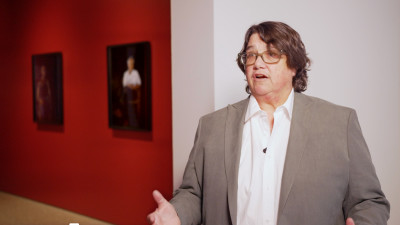Meet the architects: Álvaro Siza and Eduardo Souto de Moura
Meet the architects: Álvaro Siza and Eduardo Souto de Moura
Sensing Spaces
By Kate Goodwin
Published 19 January 2014
More than any other architects, Álvaro Siza and Eduardo Souto de Moura have made me look with a fresh eye at the Royal Academy’s galleries and architecture.
-
Both Pritzker Prize winners and heroes in their native Portugal, Álvaro Siza and Eduardo Souto de Moura’s refined and subtle architecture always sets up an intriguing dialogue with its context. As a young architect, Souto de Moura worked briefly for Siza, his teacher and mentor, before setting up his own practice. Their relationship has remained very close, with offices in the same building in Porto, and they now also both live in a building designed by Souto de Moura. I invited them to work as a duo - either creating a joint installation or two separate ones, which none the less could be seen as a pair. They chose the latter.
-

Eduardo Souto de Moura’s Casa de Musica Subway Station, Porto (2005)
One of the 60 new stations constructed over 10 years across Porto.
Photo © Royal Academy of Arts
-
Walking through the Main Galleries with Souto de Moura on his first site visit he observed the order and symmetry of the Neoclassical plan. These are the qualities that make them so good for exhibitions, as you can set up a vast number of relationships between works and sequencing of spaces.
Souto de Moura remarked that:
-

Meeting with Eduardo Souto de Moura about his installation

Alvaro Siza sketching at the Royal Academy of Arts, London
-
This respect for history and tradition is one shared by his mentor. Siza talks often about continuity; that everything he does as an architect is building on something that already exists. He says that architects don’t invent anything; they ‘transform reality’.
-

Alvaro Siza’s Leca de Palmeira, Matosinhos, Portugal (1961-66)
A beautiful meeting of architecture and nature
Photo © Royal Academy of Arts
-
A visit to the Royal Academy is a rich architectural experience in its own right, and I have always thought of this exhibition as starting the moment you leave Piccadilly and enter the courtyard. When I asked Siza about his first impressions of the RA, he said:
-
It will be Siza’s work that you first come across in the exhibition, located in the Annenberg Courtyard. It is a characteristically subtle piece which invites observation of the courtyard as much as of itself.
-

Alvaro Siza sketching during a site visit to the Royal Academy in 2013

Alvaro Siza sketching during a site visit to the Royal Academy in 2013
-
Video









